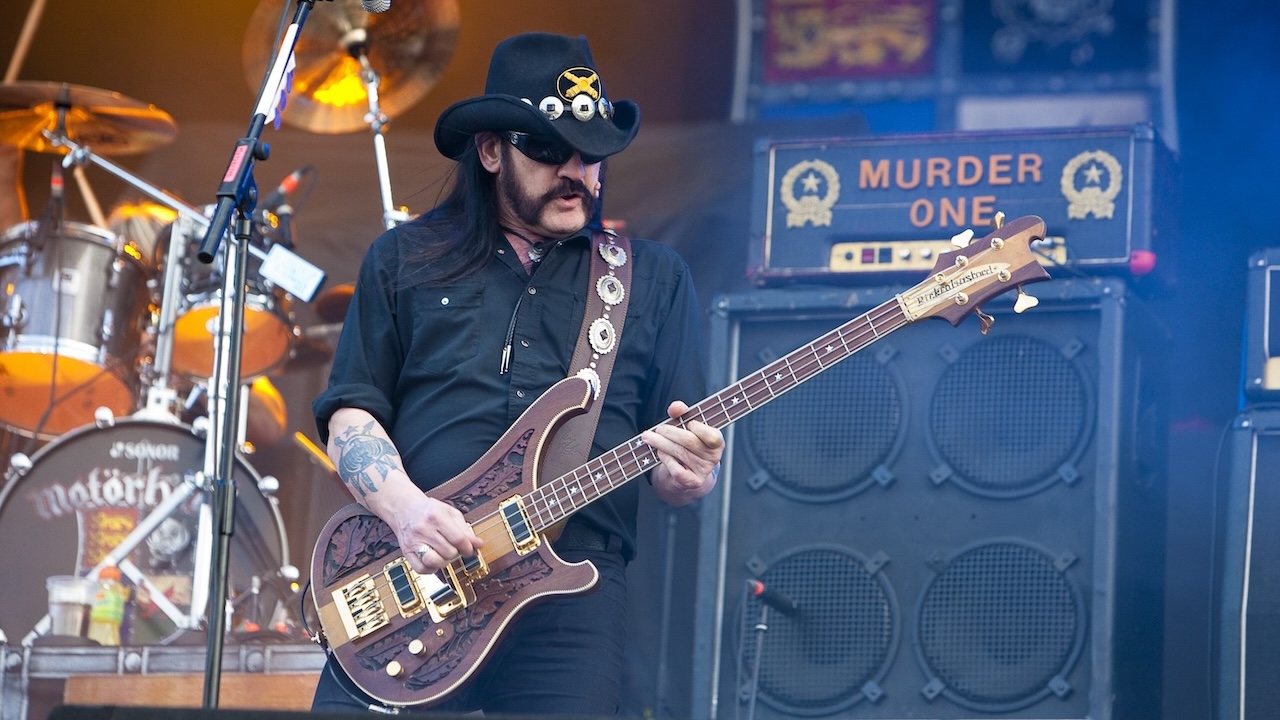“I’ve let a few well-known bassists loose on Lemmy's rig, but no-one sounds close to him”: According to his bass tech, dialing in Lemmy's overdriven tone isn't easy
Ever wondered how Lemmy got those terrifying bass tones with Motörhead? Grab your earplugs – we're going in

“I'm made for bass – I'm supposed to play bass, that's what I'm supposed to do,” said lan ‘Lemmy’ Kilmister, who departed for the great gig in the sky in December 2015.
Born the son of a clergyman in 1945, Lemmy – said to be so nicknamed because of his habit of borrowing cash from his bandmates, we're told, although this was never fully confirmed – indulged in the rock ’n’ roll lifestyle with as much commitment as any of the elite.
Describing his overdriven bass tone isn't easy, although many have tried. “Lemmy’s bass playing with Motörhead was just so insane,” said Guns N’ Roses’ Duff McKagan. “His tone was so huge that you can’t talk about distorted bass guitar without mentioning him.”
We asked Lemmy in 2003 and his bass tech Tim Butcher in 2015 how this uncompromising tone was reached. “I'll tell you the controls on my amp, left to right,” said Lemmy, adding, “Presence is at three o'clock. Bass is off. Middle is full. Treble is off. Volume at three o’clock.”
By that he meant that Presence and Volume were at approximately 8 out of 10, a fact confirmed by Butcher. “As far as how to sound like Lemmy, I have let a few well-known bassists loose on Lem's rig, and no-one sounds close to him. He has his own unique style, which is loosely based on banging it really hard!”
Never precious about the secrets of his tone, Lemmy was the polar opposite of certain bassists we've come across who refuse to divulge the contents of their pedalboards. Perhaps this was because he didn't bother with effects, but we like to think it was because he just didn't care about that stuff.
“I just turn it up really loud and hit it really hard! No effects. I've never really used any pedals. I tried a wah-wah once, but it doesn't really work with bass. It's pointless, isn't it? Effects always fuck up anyway, and then the feedback starts howling, and you're standing there like a clown.”
All the latest guitar news, interviews, lessons, reviews, deals and more, direct to your inbox!
A Marshall user for life, Lemmy explained: “I've got two old Marshall JMP Super Bass 25, with 4x15s and 4x125 on each side. I got the 4x15s in America. We went down to this guy's house, and his wife showed us this summerhouse in the garden. We had to dig our way through all this furniture and shit, and there were these two cabs with the covers on. She pulled the covers off and they were Marshalls from the '60s.
“They haven't made 4x15s for a long time. They were brand new, never been used. And I got the two of them for four hundred bucks!”

As for bass guitars, Lemmy usually – but not always, you may be surprised to hear – preferred to play a Rickenbacker, ending his career with a signature model, the 4004LK.
Picking the strings near the neck, he came up with an indistinct tone that provided more of a texture than actual individual notes. We asked him if the strings lacked tension when plucked at that point, and he explained: “Well, I don't use small-gauge strings. I'm a great believer that there should be heavy-gauge, medium, and light and that's all, otherwise it's too confusing.”
Understandably enough, Lemmy didn't take particularly kindly to naive observations such as, “The bass isn't very clear in your songs,” batting that one aside with “Well, you see I don't mind the bass getting lost, because I think a band should sound like three or four guys playing together. It shouldn't sound like four solo instruments.”
“I don't understand why you'd want to hear just one instrument. I just see the wall, I don't see the bricks on their own... I like it to sound like a band, like the Beatles always did.
“Even Hendrix, you couldn't tell what the fuck was going on with him. There'd be so many guitars on there. I like to hear a band – that's the idea of being in a band. You play together!”

Nick Wells was the Editor of Bass Guitar magazine from 2009 to 2011, before making strides into the world of Artist Relations with Sheldon Dingwall and Dingwall Guitars. He's also the producer of bass-centric documentaries, Walking the Changes and Beneath the Bassline, as well as Production Manager and Artist Liaison for ScottsBassLessons. In his free time, you'll find him jumping around his bedroom to Kool & The Gang while hammering the life out of his P-Bass.

